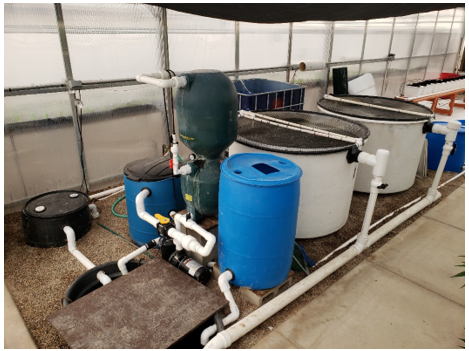ENGINEERING OF A ZERO-DISCHARGE COUPLED AND DECOUPLED AQUAPONICS SYSTEM PROTOTYPE
There has been much debate regarding whether aquaponics systems should be coupled or decoupled, particularly for commercial food production. Decoupling allows the fish and plant components to be managed separately, thus enabling optimal growing conditions for each . It also allows for zero waste to come from operating the RAS, which in its entirety becomes used to drive the hydroponics system. However, decoupling does little to improve upon the fish growing conditions from a traditional recirculating aquaculture system (RAS). On the downside, it actually removes the added filtration that plants provide in a coupled aquaponics system. By incorporating hydroponics directly into the RAS of a decoupled aquaponics system, we can further control nitrate levels as well as use the plants to take up various contaminants or other pollutants that might otherwise persist in the aquaculture system water.
This prototype examined the feasibility of growing tomatoes in Bato buckets ("Dutch buckets") using aquaponics. With this system we were able to monitor the nutrient content available for plants in both the coupled and decoupled aquaponic system as well as optimize the aerobic mineralization of fish waste in order to maximize nutrient availability . Successful operation of this prototype system has shown the sustainability and potential cost savings for investment in this model for aquaponics food production.
